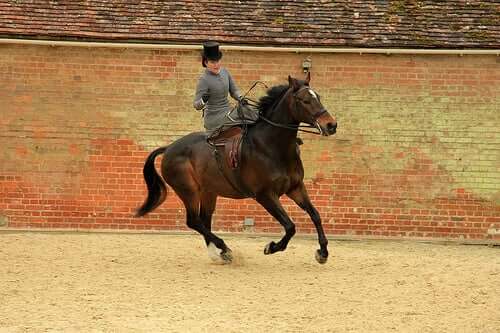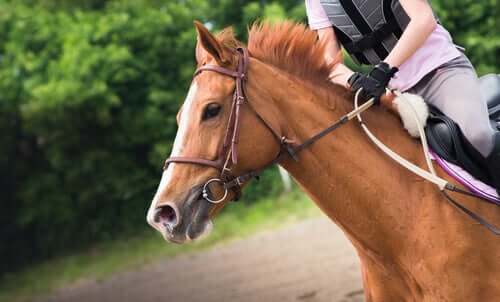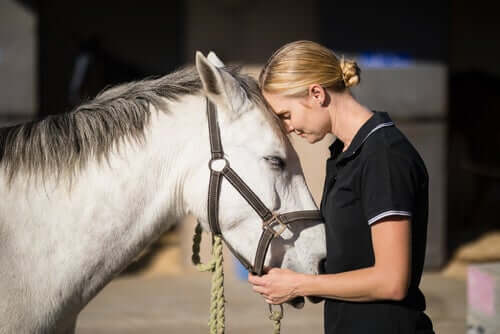How to Train Your Horse for a Competition

If you’re passionate about exhibitions and have a good horse, maybe you should train it! We’re here to tell you that it’s not as simple as you may think, yet not as complicated as some say it is. To do so, you must start by knowing what an equine exhibition is. This will allow you to share and discuss criteria with others in the field and help you train your horse with better results.
Train your horse after learning the exhibition’s criteria
A horse’s name
The first thing to keep in mind is that in an exhibition, all horses have a name. This is usually the one assigned to the horse by its breeder. The surname is usually that of the farm where the horse comes from. For example, a breeder may choose to name a horse ‘Ladybug’ and the farm where it comes from is called ‘Golden Gate’. Therefore, the horse would then be called ‘Ladybug from Golden Gate’.

Evaluation criteria
Stepping or walking
When it comes to stepping, a horse’s trotting should be highlighted. It’s a stepping move performed diagonally. Thus, the right front leg and the left rear leg are on the ground while the others are in the air.
There’s also the trotting and canter steps, which are similar to the trot step but with greater speed. The step’s rhythm increases without losing the characteristic sound it makes on the ground.
The judges
The exhibition’s judges make an analysis and comparison of the horses on the show and grade them. This occurs after observing their composure on the track. Attention is paid to the speed, skill, and delicacy with which the horse performs its presentation.
The judges also make an evaluation of the horse’s physical qualities. The tail’s position is important, as well as the body’s disposition. Therefore, they emphasize evaluating to see whether the horse’s back is straight enough according to their standards.
Other criteria are the horse’s neck shape and its general beauty and appearance.
In the arena
Horses usually enter the area by category. Once the categories are established, the horses then come out according to their age. The ages are usually grouped in the following way:
- From 33 to 42 months old – these are horses still in the process of training
- Between 42 to 60 months old
- And, finally, a group for those older than 60 months of age
Useful tips
While you train your horse, it’s useful to keep in mind that it must have the following qualities:
- The horse must be tame, but remember individuals vary. Usually, a horse takes a minimum of six weeks to be trained appropriately, and that is only to a minimum standard.
- Another good quality it will need is the ability to endure the stress that every event (or exhibition) brings with it. Changing places, all the beaming lights, people, other animals, and loud music isn’t something easy for any animal to endure for long periods of time.
As we can see, it’s vitally important to work on the horse’s sociability so that it can withstand the pressure of an exhibition. It’s recommended that the horses live in places with good ventilation and not in reduced or limited spaces.
A horse that will be participating in an exhibition should be fed very early in the morning. You must feed it in a balanced way and under scientific criteria at around 5:00 a.m.
The animal’s digestive system must be in perfect condition. As a result, you’ll have peace of mind in relation to their coat’s health, their muscle mass and the absence of nervousness.
Of course, grass should always be available. This will help the horses be free and have fun outside.

After-eating exercises
After breakfast, the horse must be taken to a riding school for physical exercise, where protectors must be placed on its legs. The work should be progressive: Starting with five minutes and gradually increasing the time until reaching the optimal level according to their age. As a general rule, we could say that arriving at 30 minutes of exercise is an optimal time after two months of training.
After these exercises, the horse should be groomed and its coat brushed, taking great care in cleaning the legs.
At noon, the horse should be given another 25% of its daily diet (the first 25% is at breakfast). In addition, we recommend giving the horse some free grazing-oriented rest for about two hours.
Starting from 18:00 hours, the horse must be fed the remaining 50% of its daily diet. This goes together with the bedding arrangement (box) and leaving plenty of grass for its entertainment.
Many talented riders decide that they have the skills to train horses and give lessons. This could be you if your passion takes you as far as feeling excitement while teaching others or training many horses.
We hope you enjoyed today’s article on these fascinating animals and, happy training!
Main image credits: Karen Roe
